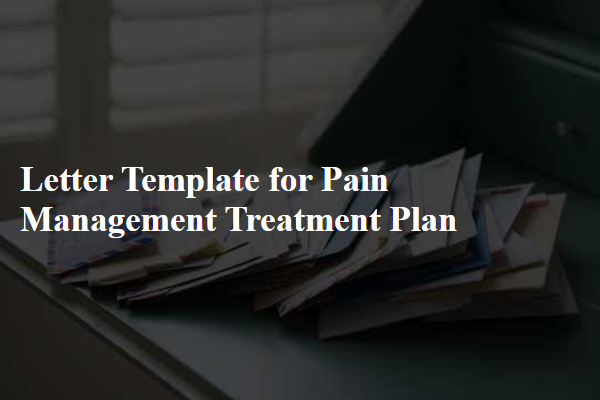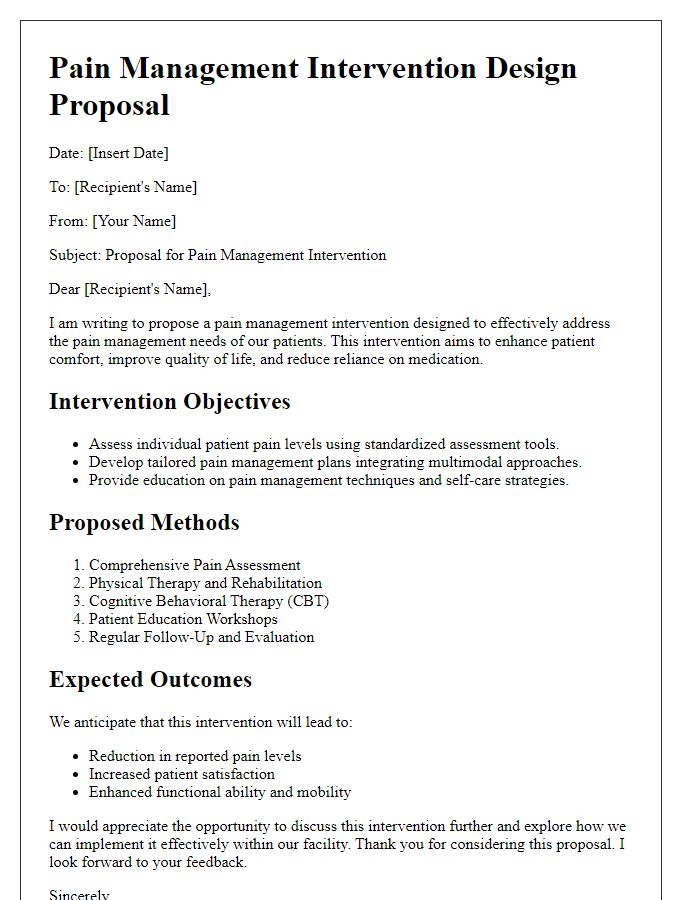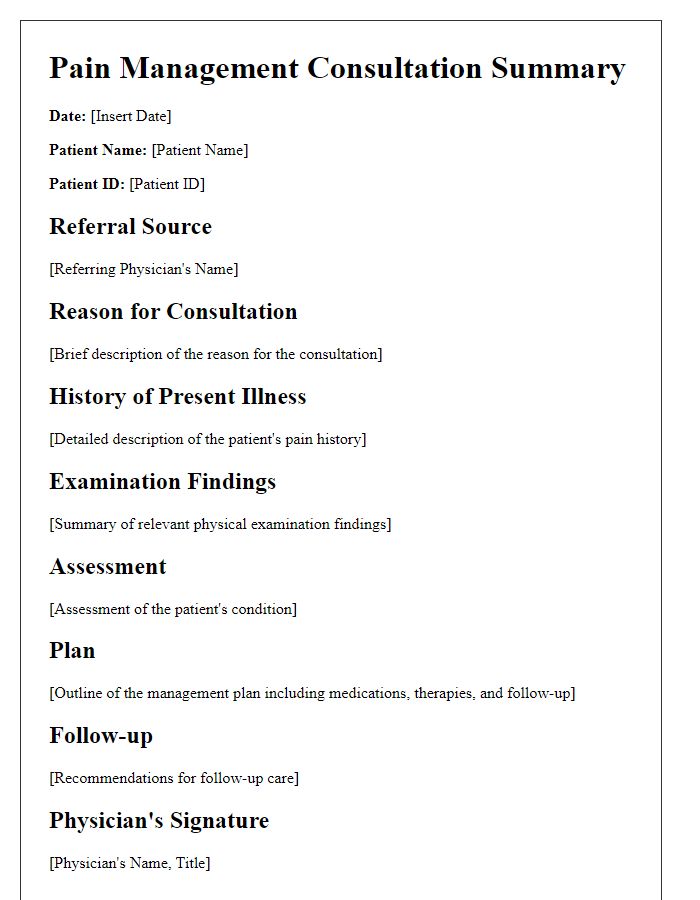Are you or a loved one grappling with persistent pain? Navigating the complexities of pain management can be overwhelming, but having a well-structured treatment plan can make all the difference. In this article, we'll explore effective strategies and essential components tailored to your specific needs, ensuring a holistic approach to pain relief. So, let's dive in and uncover the path to a more comfortable life together!

Patient Identification Information
Effective pain management treatment plans focus on individual patient identification information, including personal details and medical history. For instance, a patient may be identified by name (John Doe), age (45 years), gender (male), and medical record number (123456). Specific conditions, such as chronic lower back pain due to a herniated disc (identified through MRI scans), and relevant medications (like Gabapentin 300 mg) should be documented. Contact information, including a reliable phone number and email address, ensures seamless communication for follow-up appointments. Additionally, the inclusion of emergency contacts, such as a family member (Jane Doe, phone number: 987-654-3210), provides support in urgent situations. This comprehensive overview fosters tailored treatment strategies aimed at alleviating pain levels while improving the patient's overall quality of life.
Comprehensive Pain Assessment
Comprehensive pain assessments are essential for effective pain management strategies in clinical settings. Evaluation tools such as the Visual Analog Scale (VAS) quantify pain intensity, while the McGill Pain Questionnaire provides qualitative insights into pain characteristics. Detailed patient history, including previous treatments and their outcomes, guides personalized treatment plans. Assessment may involve multidisciplinary approaches, combining physical therapy, medication management, and psychological support to address the multifaceted nature of pain. Regular follow-ups are necessary to monitor treatment efficacy and adjust approaches as needed for optimal patient outcomes.
Treatment Objectives and Goals
Effective pain management requires a clear treatment plan with specific objectives and goals tailored to individual patient needs. One primary objective may include reducing pain levels, often quantified on a scale from 0 to 10, where 0 signifies no pain and 10 denotes the most severe pain imaginable. Another goal may focus on improving functional abilities, such as the capacity to perform daily activities like walking, lifting objects, or engaging in physical therapy sessions. Psychological support plays a crucial role, incorporating techniques like cognitive behavioral therapy for managing pain-related anxiety and depression. Regular assessments and adjustments based on patient feedback can ensure continuous improvement in pain management outcomes, promoting overall quality of life. Addressing both physical and emotional components of pain fosters a holistic approach to treatment, enhancing patient experience and satisfaction.
Multimodal Pain Management Strategies
Multimodal pain management strategies involve the use of diverse techniques to alleviate discomfort and improve patient quality of life. Pharmacological interventions include non-steroidal anti-inflammatory drugs (NSAIDs) such as ibuprofen and acetaminophen, which target inflammation and pain relief. Physical therapy, a crucial component, employs exercises and modalities to enhance mobility and strengthen areas affected by pain, particularly the lower back and joints. Cognitive-behavioral therapy (CBT) encourages patients to develop coping mechanisms for chronic pain, often leading to reduced psychological stress. Alternative therapies, such as acupuncture, provide additional relief by stimulating specific points on the body to restore energy flow. Regular monitoring and adjustments by healthcare providers ensure that the treatment plan remains effective and tailored to individual patient needs.
Monitoring and Follow-up Plan
Developing a comprehensive Monitoring and Follow-up Plan for patients undergoing pain management treatment is crucial. Regular assessments, such as bi-weekly or monthly follow-ups, can evaluate pain levels using standardized scales like the Numeric Pain Rating Scale (NPRS), which ranges from 0 (no pain) to 10 (worst possible pain). Monitoring medication efficacy and side effects is essential, especially for opioid analgesics since they can lead to dependency if mismanaged, alongside adverse effects like constipation or nausea. Scheduling appointments with multidisciplinary teams, including physical therapists and psychologists, can enhance treatment effectiveness. Patient education on lifestyle modifications, including exercise and nutrition, reinforces the management plan. Digital health tools, such as mobile apps for symptom tracking, can facilitate communication between patients and providers, ensuring timely adjustments to therapies. Regular reviews of the treatment goals, often every three to six months, can help adapt strategies and improve quality of life.













Comments